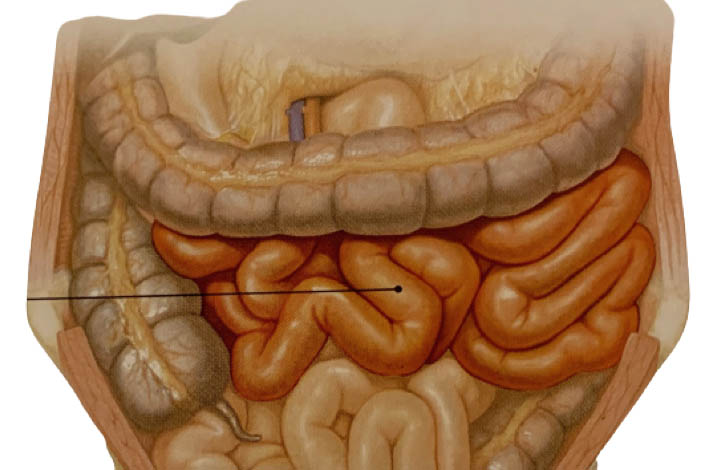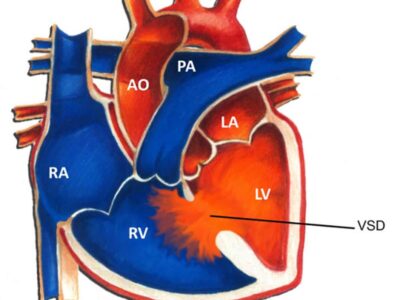By: Prof. Dr. Seyed Saeid Zamanieh Shahri, MD and Prof. Dr. Sonia Sayyedalhosseini, MD
Small bowel cancer is a rare type of cancer that occurs when cancerous cells grow in the tissue of the small intestine. The small intestine is part of the body’s digestive system and is a long tube that connects the stomach to the large intestine. The role of the small intestine is to absorb most of the nutrients and minerals in food. Over time, small bowel cancer may grow and block the small intestine. The most common type of small bowel cancer is carcinoid tumor, followed by adenocarcinoma. Adenocarcinoma of the small intestine begins in the glandular cells that are present in the lining of the small intestine and are responsible for making and releasing mucus. Most of these tumors occur in the small intestine near the stomach. Uncommon types of this cancer include sarcoma, lymphoma and gastrointestinal tumors. In this article, we will discuss all topics related to this type of cancer.
Anatomy and physiology:
The small intestine is the part of our digestive system where most nutrients are absorbed. Everything we eat and drink during the day enters the body through the small intestine. In other words, this organ absorbs nutrients and distributes them in the body.
This organ is commonly known as the small intestine of the digestive system. However, the small intestine is twenty feet long and about an inch in diameter. On closer inspection, the small intestine appears narrow and convoluted. Its complexity helps the intestine to fit in the limited space that the body provides for this organ. The small intestine is covered by a soft tissue that contains many villi and microvilli. These small ridges give the small intestine more surface area to absorb nutrients from food. Therefore, it is not surprising that the small intestine is the main site of molecular digestion of foods. The small intestine is able to absorb these nutrients and transport them to the rest of the body through the bloodstream.
The small intestine is 2.7 to 4.5 meters long and is very convoluted at the bottom of the abdominal area. Under the influence of various diseases, this organ can suffer many disorders, the treatment of which is vital to maintain health and continue life. The small intestine is the place where ninety percent of all nutrients are absorbed and the rest of the absorption is left to the large intestine. The main function of the small intestine is to absorb nutrients from broken down particles that are delivered from the stomach. It is important to note that the actual digestion of food takes place in two stages. Digestion begins with mechanical digestion in our mouths, and by chewing and rolling the food between the teeth, the bonds that hold the food particles together are physically broken.
This process is done only by the act of breaking down starch by amylase enzyme in our saliva. This digestion continues with the help of acids in the stomach, then the second stage of digestion, i.e. chemical digestion, begins.
Chemical digestion is very different from mechanical digestion in that actual enzymatic reactions occur to break down the molecular bonds that bind food together. This is possible with the help of bile acids released from the liver and gall bladder. As such, chemical digestion relies on bile acids secreted from the gallbladder and enzymes that break down food, and then ends with the release of minerals into the bloodstream and many body tissues. Chemical digestion is a process that really only happens in the small intestine, a fact that separates it from standard mechanical digestion, which occurs at several points along the digestive tract.
The small intestine is a place that is very rich in enzyme activity. While some chemical activity occurs in the stomach with the help of pepsin acid enzymes, chemical digestion continues in the small intestine.
When we examine the macromolecule digestion of different diets, the distinctions become more apparent. In general, the main molecules absorbed by the small intestine include amino acids derived from proteins, fatty acids derived from lipids, and simple sugars derived from starch or complex carbohydrates, which we will discuss in more detail below.
Eighty percent of body water and electrolytes such as chloride, iron, potassium and sodium are absorbed from the small intestine. Ion channels are very important in completing and directing this life-sustaining process. The small intestine plays an important role in absorbing vitamins and minerals from our diet.
Fat-soluble vitamins K, A, D, and E are absorbed by simple diffusion with dietary fats. Meanwhile, water-soluble vitamins such as B and C are absorbed by simple diffusion, as their water-friendly nature does not prevent them from easily entering our cells. Vitamin B12 is absorbed through active transport in the ileum of the small intestine. To Be Continued














